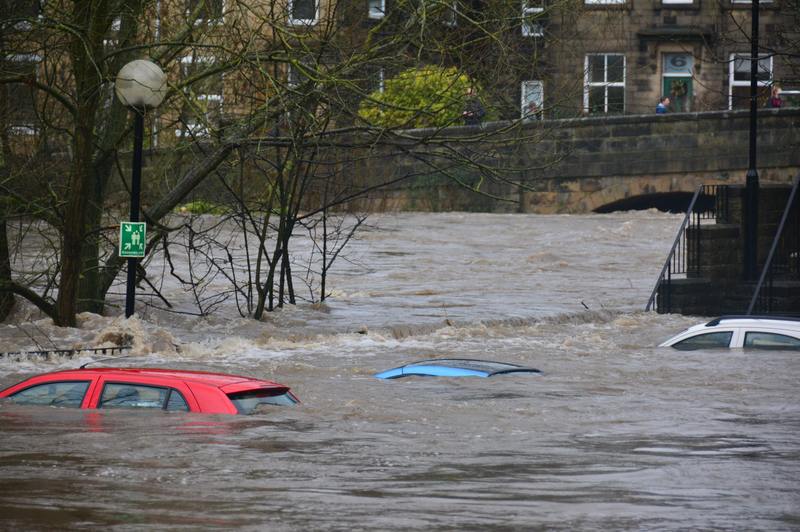A flood is surely something many homeowners dread because, after each surge of water, there comes the need to learn how to prevent mold after a flood. However, the task does not have to be a hassle as you go through the following tips and tricks.
Like the urge to get rid of the muddy look of a flood, you should not also delay removing the musty odor that indicates the presence of mold. Mold spores circulate in the air and eventually affect the air quality inside the house.

This will trigger those who have allergic reactions to mold and have a compromised immune system. As such, you must take safety precautions by cladding yourself in gloves, goggles, and N-95 masks or P-100 respiratory protection.
Breeding Grounds Of Mold During A Flood
Of course, molds can thrive anywhere with the presence of moisture. However, there are only specific home items that are exposed to flood water, which may trap mold.
Mold can be trapped in wood, upholstered furniture, and other porous materials. Take into account tossing this stuff out. Anything completely buried below the waterline should be thrown away.
Objects consisting of hardened or nonporous materials, such as glass, plastic, and metal, can often be cleaned, sterilized, and utilized. Mold spores are not removed by drying the carpet. Mold and mildew-infested carpets should be thrown out.
These are the items that you should consider taking a look at before the actual cleaning process. It will help the cleanup easier and a lot smoother as everything is already prepared.
How To Prevent Mold After Flooding
Once you have removed these items from your house, you can now proceed to disinfecting and cleaning the remaining items and surfaces.
Tip #1. Take out the extra moisture
Keep in mind that you should clean and dry out the area for the next 1-2 days. Moisture is one of the primary breeding grounds of mold. Check the area every now and then to look out for lingering moisture.
Tip #2. Keep the area ventilated
To avoid mold spores from suspending in the air, open the doors, windows, and any source of air. Through this, you will be keeping good ventilation in the area which will keep mold growth at bay.
However, do not switch on your heating or air conditioning if floodwaters have damaged it. You’ll need the assistance of a trained professional.
All areas and parts of a heating, ventilation, and air-conditioning (HVAC) system that were soaked during a flood are likely reservoirs for filth, debris, and microorganisms such as bacteria and mold. Furthermore, moisture can accumulate in parts of HVAC system components that are not flooded, such as air supply ducts above the waterline, allowing microorganisms to thrive.
As such, all HVAC system components should be properly examined and sanitized by a specialist. Speaking of air conditioners, this article can guide you in preventing mold from being trapped in your ACs.
Tip #3. Lower levels of humidity
Molds also thrive in humid environments. As such, make sure to keep the humidity at a tolerable level.
To do this, you can use electric fans and dehumidifiers as long as they are safe to use. Run a dehumidifier if needed until all porous surfaces in the space are totally dry.
Low relative humidity draws moisture away from these surfaces, and humidity levels below 50% will prevent mold formation. A moisture meter can be used to obtain precise measurements.
Tip #4. Do not mix cleaning chemicals
If you are thinking of using bleach in getting rid of mold, do not mix it with ammonia or with any household cleaning agents. Doing so will produce toxic fumes which will apparently produce a bad air quality and may affect the ventilation of your home.
Tip #5. Sanitize everything
After cleansing, all water-damaged areas, furniture, and items should be properly sanitized. Utilize a steam cleaner or a wet and dry vacuum cleaner to wipe your sofa, mattresses, and other furniture. Clean surfaces such as floors and walls with soap and water before sanitizing with a water-chlorine bleach solution.
Tip #6. Dry surfaces after cleaning
After the cleaning process, make sure to dry the area completely. This will not allow the molds to take any remaining moisture as an opportunity to regrow.
Also, it would be much better to deal with these mold-infested areas using water and detergent. Apply a mixture of 1 cup bleach and 1 gallon of water to eliminate mold formed by floodwaters that won’t go away with the detergent solution. If you are new to this mold problem, you can consult this article on how to remove mold from water-damaged items.
Conclusion
Sure, it might be quite a task to learn how to prevent mold after a flood. However, it would lead to further damage if neglected. When you go through the mentioned prevention tips, you are not only keeping the molds at bay, you are also keeping the doctor away.
